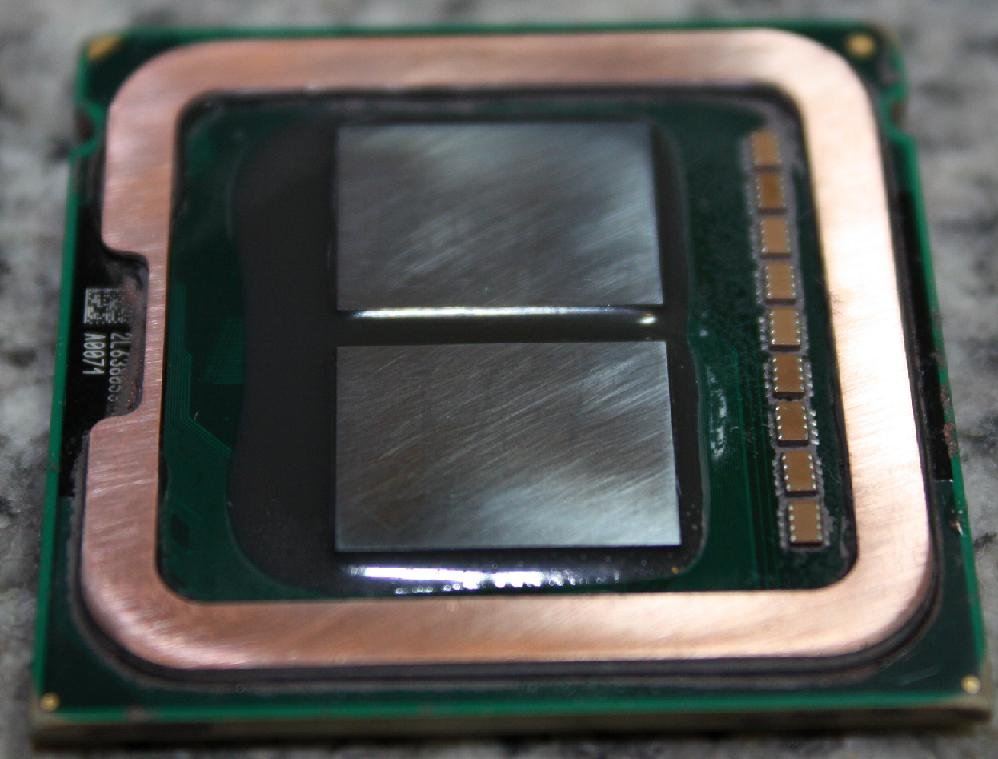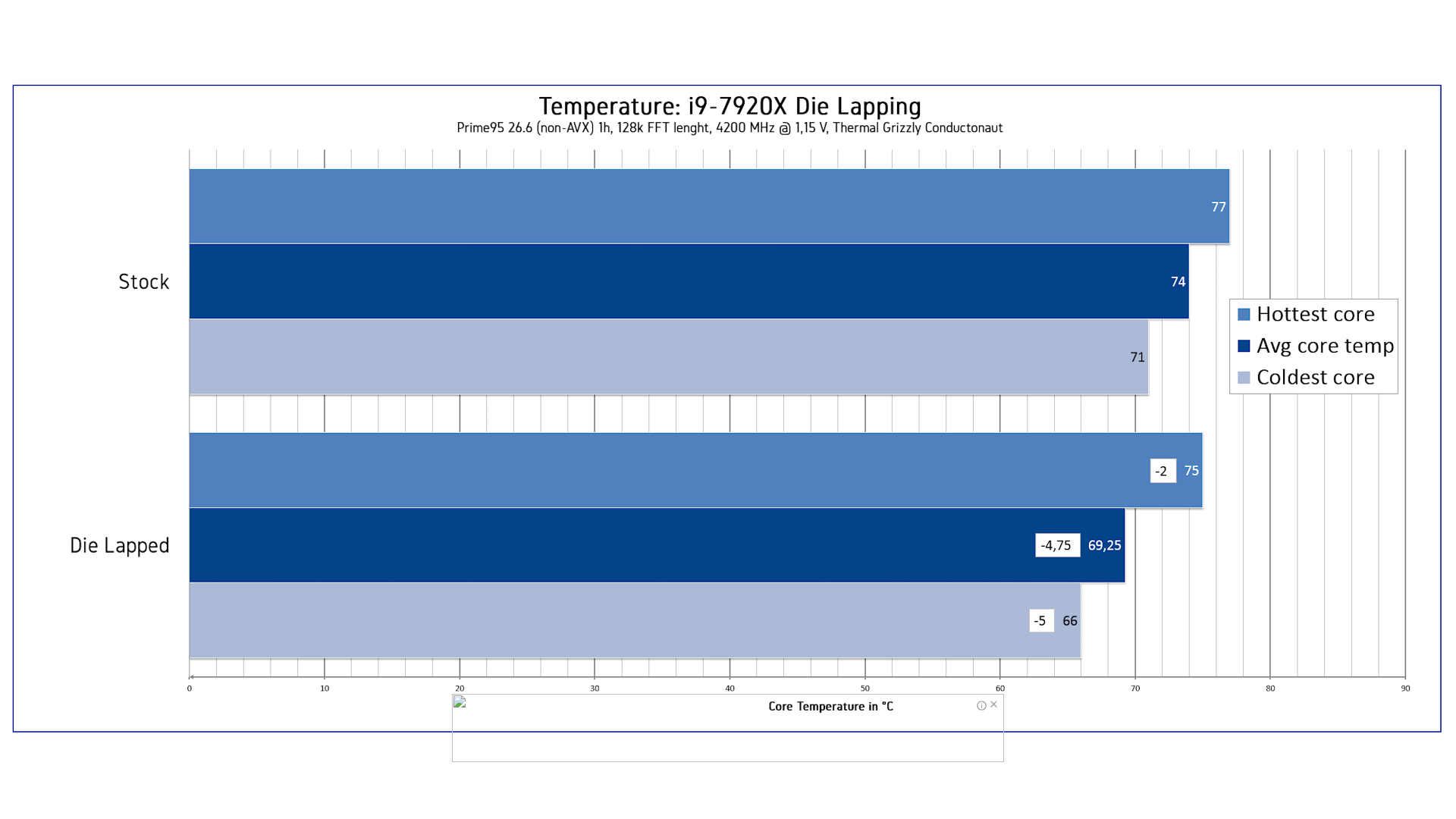erek
[H]F Junkie
- Joined
- Dec 19, 2005
- Messages
- 10,889
any proponents of lapping the cpu die for better thermals after deliddin'?


Follow along with the video below to see how to install our site as a web app on your home screen.
Note: This feature may not be available in some browsers.

It's gonna make you feel like Evel Knievel destroying his expensive processor.If someone told me they lapped their CPU's exposed die, I'd respond that they have an unhealthy obsession.
That said, if it makes you feel like Evel Knievel jumping Snake River Canyon, more power to ya.
Probably used a CNC machine. I could do it at my shop.I wonder how many people noticed that the pic isn't just the die(s) ground down, but the entire IHS as well. That was a whole CPU that was just held down against a belt sander or something lolol
How did you delid ? It looks all scratched...


What kind of cooler are you using? Did you lap the cooler as well?
This used to be a thing back in the day with old socket 370 cellys/P3's, anthon XPs and other bare die CPU's.
Do some looking and you will find posts about it from way back.
I'll try to find the ones about die lapping, but for now take a look at these.
https://arstechnica.com/civis/viewtopic.php?f=8&t=1071658
http://www.frostytech.com/articleview.cfm?articleid=82&page=2
https://forums.anandtech.com/threads/athlon-xp-lapping.760342/
Its been done to GPU cores too.
http://www.overclockersclub.com/guides/howtolapvideocard/
Die lapping was a thing back in the day, I'm just not finding and good articles or posts about it. Just the typical I lapped my die and lost 2-3c
If I come by one I'll post it.
I'm not talking about what they do today, lapping dies went on back in the day. its just been so long that the sites form the late 90s early 2000s are long gone.
Also deliding and redlining hardly ever went on back n the day. IHS back then on the p3/4 days were there to keep noobs from cracking the die. If anything people removed them altogether and ran bare die.
I'm not taking about the core2 era when lapping IHS and heastink were all the rage. I'm talking about 1998-2002 when most CPUs did not even have IHS.
Some dies back them were clear coated or laser engraved and people would lap the clear coat/engraving off.
EDIT:
Found one
https://translate.google.com/translate?hl=en&sl=auto&tl=en&u=http://www.pasarlascanutas.com/lapping/lapping_de_una_cpu.htm
Just wanted to chime in a re-iterate that Billy the Dimwitt is 100% right. Actual CPU die lapping was a real thing back in the day on the "Flip Chip" based CPU manufacturing process both Intel and AMD used starting back in the slot-1 and slot-a days..
Also as an FYI: I have lapped the CPU die on a couple 7600K's I have (even noted this much higher up in this thread). There is nothing wrong with lapping the die; the closer you get to the actual heat source (rather than hot silicon) the better your temps (obviously). How much it matters is debatable, but the 7600K's I have done this to run 24/7 and at 5GHz without issue.
The Celeron 300A did not have a removable IHS or any of the gunk you speak of. The IHS was soldered to the die and CPU PCB.
Doesn't sound worth the risk, except if you love doing it I guess
My 7600k runs very well at 5.2Ghz 24/7, and its "only" delidded (with lapped IHS)
Lower temps means obviously more headroom for voltage, but a crappy chip is a crappy chip
Wouldn't do all that work without knowing it's a good chip
If it's a good chip I don't think I'd risk ruining it; shrugs
Is there an actual reference of how much you could even remove without grinding into something important?
Wanted to add one thing before I start.. I have not even tried going over 5.0GHz on the 7600k's I have, but I will do so when I have time (in the middle of moving half way across the country)... And by 24 hours stable, I am talking running max heat on Prime95, not just the system operational.
As to how far to go before its "too far" on the die, on the original flip chip based processors, you would see a copper layer under the silicon right before you would hit actual die components. I dont know if the current gen chips are set up the same way or not. On my 7600k's, I did not go very far; I mainly wanted to remove any residual byproducts vs. much of anything else. I do have another 7600k here I could maybe use as a guinea pig to see how far is too far...
. . .If someone told me they lapped their CPU's exposed die, I'd respond that they have an unhealthy obsession.
That said, if it makes you feel like Evel Knievel jumping Snake River Canyon, more power to ya.